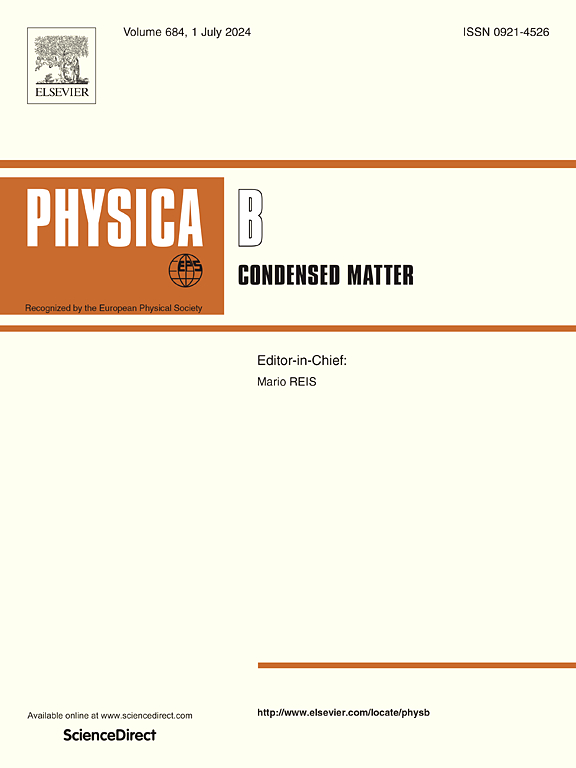XPS visualization of soft and hard Lewis base passivation of defects in MAPbI3 perovskite
IF 2.8
3区 物理与天体物理
Q2 PHYSICS, CONDENSED MATTER
引用次数: 0
Abstract
A new method for visualization of uncoordinated lead (Pb2+) in solution processed polycrystalline halide perovskite films is presented. The method is based on the measurements of XPS spectra with high energy resolution, which show a narrowing of the low-energy part of the Pb 4f-core level spectra due to passivation of halide vacancies with soft and hard Lewis base doping and reduction of contribution of uncoordinated lead (Pb2+) at binding energy of ∼137.8 eV. Based on XPS Pb 4f-spectra measurements the influence of size of hard Lewis base metal iodides on the passivation of surface defects in MAPbI3 perovskite is discussed. It is found that at low concentrations (1–5 %) CaI2, BaI2, AgI with metal ionic radius ≥1.0 Å the metal atoms substitute the coordinated Pb2+ atoms whereas at higher concentrations they are located at grain boundaries and passivate the uncoordinated lead sites. For hard Lewis base metal iodides with small ionic radii (0.7–0.8 Å) (MnI2, FeI2, CuI) the situation is quite different and metals occupy the interstitial positions keeping the uncoordinated Pb2+ ions to be unchanged. The use of appropriate charge-transport layers and soft Lewis base molecular modifiers can improve the crystallization of perovskite films by reducing the number of defects formed, which is also reflected in the XPS Pb 4f7/2 spectra.
MAPbI3 包晶中缺陷的软路易斯基和硬路易斯基钝化的 XPS 视觉效果
提出了一种在溶液处理多晶卤化物钙钛矿薄膜中显示不配合铅(Pb2+)的新方法。该方法基于高能量分辨率的XPS光谱测量,结果表明,由于软、硬路易斯碱掺杂对卤化物空位的钝化,以及结合能为~ 137.8 eV的非配位铅(Pb2+)的贡献减少,pb4f核能级光谱的低能部分缩小。基于XPS pb4f光谱测量,讨论了硬路易斯母金属碘化物尺寸对MAPbI3钙钛矿表面缺陷钝化的影响。结果表明,在低浓度(1 - 5%)ca2, BaI2, AgI(金属离子半径≥1.0 Å)下,金属原子取代了配位Pb2+原子,而在高浓度下,金属原子位于晶界处,钝化了未配位的铅位。对于离子半径较小(0.7-0.8 Å)的硬路易斯贱金属碘化物(MnI2, FeI2, CuI),情况则大不相同,金属占据间隙位置,保持不配位的Pb2+离子不变。使用合适的电荷输运层和软Lewis碱分子改性剂可以通过减少形成的缺陷数量来改善钙钛矿薄膜的结晶,这也反映在XPS Pb 4f7/2光谱中。
本文章由计算机程序翻译,如有差异,请以英文原文为准。
求助全文
约1分钟内获得全文
求助全文
来源期刊

Physica B-condensed Matter
物理-物理:凝聚态物理
CiteScore
4.90
自引率
7.10%
发文量
703
审稿时长
44 days
期刊介绍:
Physica B: Condensed Matter comprises all condensed matter and material physics that involve theoretical, computational and experimental work.
Papers should contain further developments and a proper discussion on the physics of experimental or theoretical results in one of the following areas:
-Magnetism
-Materials physics
-Nanostructures and nanomaterials
-Optics and optical materials
-Quantum materials
-Semiconductors
-Strongly correlated systems
-Superconductivity
-Surfaces and interfaces
 求助内容:
求助内容: 应助结果提醒方式:
应助结果提醒方式:


